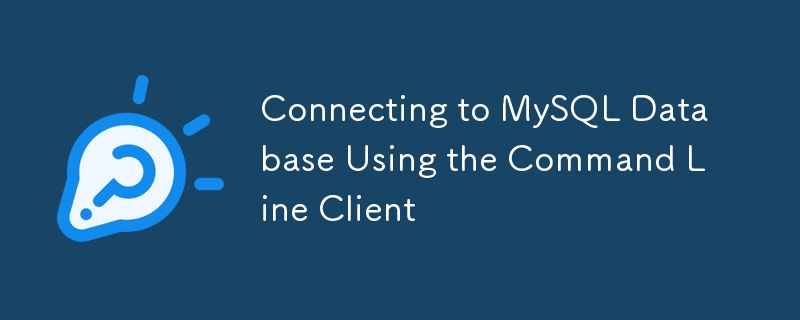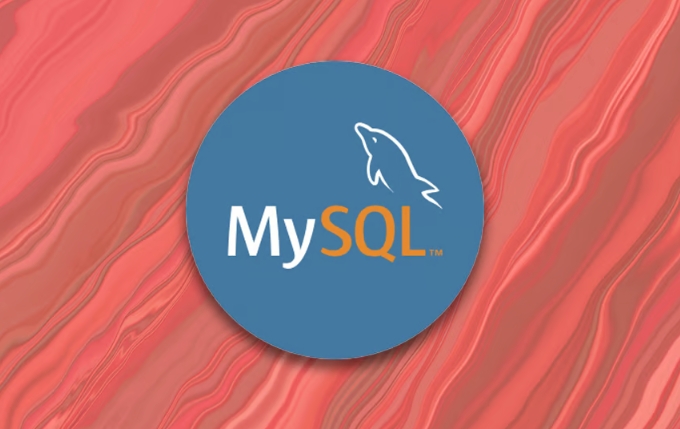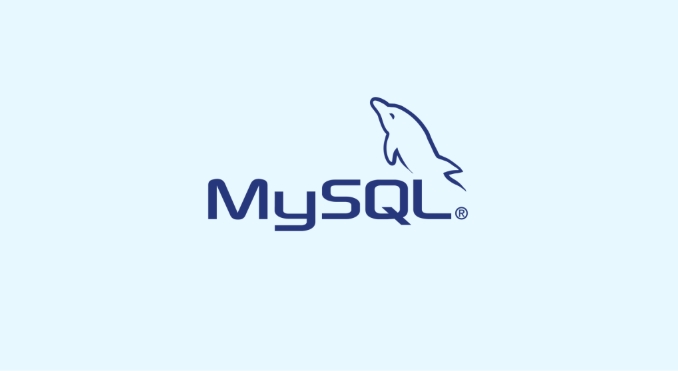Connecting to MySQL Database Using the Command Line Client
The most direct way to connect to a MySQL database is to use a command line client. First enter mysql -u username -p and correctly enter the password to enter the interactive interface; if you are connected to a remote database, you need to add the -h parameter to specify the host address. Secondly, you can directly switch to a specific database or execute SQL files when logging in, such as mysql -u username-p database name or mysql -u username-p database name

One of the most direct ways to connect to a MySQL database is to use a command line client. It is lightweight and flexible, suitable for developers and system administrators to operate databases quickly. Below are some practical operation methods and precautions.

Basic connection command
To connect to a MySQL server, the most basic command is:

mysql -u username -p
After entering this command, the system will prompt you to enter your password. After correct input, you can enter the interactive command line interface of MySQL.
If you are not connecting to the local database, but a remote server, you also need to add the host address:

mysql -u Username -p -h Host Address
For example:
mysql -u root -p -h 192.168.1.100
Make sure your users have remote access, otherwise you will encounter the problem of connection denied.
Specify the database using command line parameters
Sometimes you may want to log in to a specific database while logging in, you can do this:
mysql -u Username -p Database name
This way, you will switch to the database once you log in, eliminating the step of manually entering USE 数据库名;
- If you also want to execute an SQL file, you can do this:
mysql -u Username-p Database name< File.sql
- Want to run the query immediately after connection? You can use the
-eparameter:mysql -u Username -p -e "SELECT * FROM table name" database name
This method is great for writing scripts or doing automated tasks.
Frequently Asked Questions and Solutions
Can't connect to the database?
- Make sure the MySQL service is running (can be viewed with
systemctl status mysql) - Check whether the username and password are correct
- If it is a remote connection, confirm whether the firewall has released port 3306.
- Check whether the target user has remote access permissions (set through
GRANT)
Connection is successful but the database cannot be operated?
It may be that there is insufficient permissions. You can log in with an account with administrator privileges to view the permission settings of the current user:
SHOW GRANTS FOR 'Username'@'Hostname';
If you find that some permissions are missing, you can use the following statement to authorize (taking SELECT permissions as an example):
GRANT SELECT ON Database name.Table name TO 'User name'@'Host name'; FLUSH PRIVILEGES;
Tips: Avoid plain text password exposure
Sometimes, in order to facilitate writing scripts, the password may be written directly in the command, such as:
mysql -u root -p password
Although this is feasible, it poses a security risk. A more recommended approach is to use configuration files to save credentials.
Create a .my.cnf file in your home directory, with the following content:
[client] user = root password = your password
Then set permissions to prevent leakage:
chmod 600 ~/.my.cnf
In this way, just run the mysql command and you can log in automatically, without manually entering your account password.
Basically that's it. Master these basic points, you should not encounter too many obstacles when connecting to MySQL using the command line every day.
The above is the detailed content of Connecting to MySQL Database Using the Command Line Client. For more information, please follow other related articles on the PHP Chinese website!

Hot AI Tools

Undress AI Tool
Undress images for free

Undresser.AI Undress
AI-powered app for creating realistic nude photos

AI Clothes Remover
Online AI tool for removing clothes from photos.

Clothoff.io
AI clothes remover

Video Face Swap
Swap faces in any video effortlessly with our completely free AI face swap tool!

Hot Article

Hot Tools

Notepad++7.3.1
Easy-to-use and free code editor

SublimeText3 Chinese version
Chinese version, very easy to use

Zend Studio 13.0.1
Powerful PHP integrated development environment

Dreamweaver CS6
Visual web development tools

SublimeText3 Mac version
God-level code editing software (SublimeText3)
 How to add a primary key to an existing table in MySQL?
Aug 12, 2025 am 04:11 AM
How to add a primary key to an existing table in MySQL?
Aug 12, 2025 am 04:11 AM
To add a primary key to an existing table, use the ALTERTABLE statement with the ADDPRIMARYKEY clause. 1. Ensure that the target column has no NULL value, no duplication and is defined as NOTNULL; 2. The single-column primary key syntax is ALTERTABLE table name ADDPRIMARYKEY (column name); 3. The multi-column combination primary key syntax is ALTERTABLE table name ADDPRIMARYKEY (column 1, column 2); 4. If the column allows NULL, you must first execute MODIFY to set NOTNULL; 5. Each table can only have one primary key, and the old primary key must be deleted before adding; 6. If you need to increase it yourself, you can use MODIFY to set AUTO_INCREMENT. Ensure data before operation
 Explain database indexing strategies (e.g., B-Tree, Full-text) for a MySQL-backed PHP application.
Aug 13, 2025 pm 02:57 PM
Explain database indexing strategies (e.g., B-Tree, Full-text) for a MySQL-backed PHP application.
Aug 13, 2025 pm 02:57 PM
B-TreeindexesarebestformostPHPapplications,astheysupportequalityandrangequeries,sorting,andareidealforcolumnsusedinWHERE,JOIN,orORDERBYclauses;2.Full-Textindexesshouldbeusedfornaturallanguageorbooleansearchesontextfieldslikearticlesorproductdescripti
 How to back up a database in MySQL
Aug 11, 2025 am 10:40 AM
How to back up a database in MySQL
Aug 11, 2025 am 10:40 AM
Using mysqldump is the most common and effective way to back up MySQL databases. It can generate SQL scripts containing table structure and data. 1. The basic syntax is: mysqldump-u[user name]-p[database name]>backup_file.sql. After execution, enter the password to generate a backup file. 2. Back up multiple databases with --databases option: mysqldump-uroot-p--databasesdb1db2>multiple_dbs_backup.sql. 3. Back up all databases with --all-databases: mysqldump-uroot-p
 How to change the GROUP_CONCAT separator in MySQL
Aug 22, 2025 am 10:58 AM
How to change the GROUP_CONCAT separator in MySQL
Aug 22, 2025 am 10:58 AM
You can customize the separator by using the SEPARATOR keyword in the GROUP_CONCAT() function; 1. Use SEPARATOR to specify a custom separator, such as SEPARATOR'; 'The separator can be changed to a semicolon and plus space; 2. Common examples include using the pipe character '|', space'', line break character '\n' or custom string '->' as the separator; 3. Note that the separator must be a string literal or expression, and the result length is limited by the group_concat_max_len variable, which can be adjusted by SETSESSIONgroup_concat_max_len=10000; 4. SEPARATOR is optional
 What is the difference between UNION and UNION ALL in MySQL?
Aug 14, 2025 pm 05:25 PM
What is the difference between UNION and UNION ALL in MySQL?
Aug 14, 2025 pm 05:25 PM
UNIONremovesduplicateswhileUNIONALLkeepsallrowsincludingduplicates;1.UNIONperformsdeduplicationbysortingandcomparingrows,returningonlyuniqueresults,whichmakesitsloweronlargedatasets;2.UNIONALLincludeseveryrowfromeachquerywithoutcheckingforduplicates,
 How to lock tables in MySQL
Aug 15, 2025 am 04:04 AM
How to lock tables in MySQL
Aug 15, 2025 am 04:04 AM
The table can be locked manually using LOCKTABLES. The READ lock allows multiple sessions to read but cannot be written. The WRITE lock provides exclusive read and write permissions for the current session and other sessions cannot read and write. 2. The lock is only for the current connection. Execution of STARTTRANSACTION and other commands will implicitly release the lock. After locking, it can only access the locked table; 3. Only use it in specific scenarios such as MyISAM table maintenance and data backup. InnoDB should give priority to using transaction and row-level locks such as SELECT...FORUPDATE to avoid performance problems; 4. After the operation is completed, UNLOCKTABLES must be explicitly released, otherwise resource blockage may occur.
 How to select data from a table in MySQL?
Aug 19, 2025 pm 01:47 PM
How to select data from a table in MySQL?
Aug 19, 2025 pm 01:47 PM
To select data from MySQL table, you should use SELECT statement, 1. Use SELECTcolumn1, column2FROMtable_name to obtain the specified column, or use SELECT* to obtain all columns; 2. Use WHERE clause to filter rows, such as SELECTname, ageFROMusersWHEREage>25; 3. Use ORDERBY to sort the results, such as ORDERBYageDESC, representing descending order of age; 4. Use LIMIT to limit the number of rows, such as LIMIT5 to return the first 5 rows, or use LIMIT10OFFSET20 to implement paging; 5. Use AND, OR and parentheses to combine
 How to use the IN operator in MySQL?
Aug 12, 2025 pm 03:46 PM
How to use the IN operator in MySQL?
Aug 12, 2025 pm 03:46 PM
TheINoperatorinMySQLchecksifavaluematchesanyinaspecifiedlist,simplifyingmultipleORconditions;itworkswithliterals,strings,dates,andsubqueries,improvesqueryreadability,performswellonindexedcolumns,supportsNOTIN(withcautionforNULLs),andcanbecombinedwith







